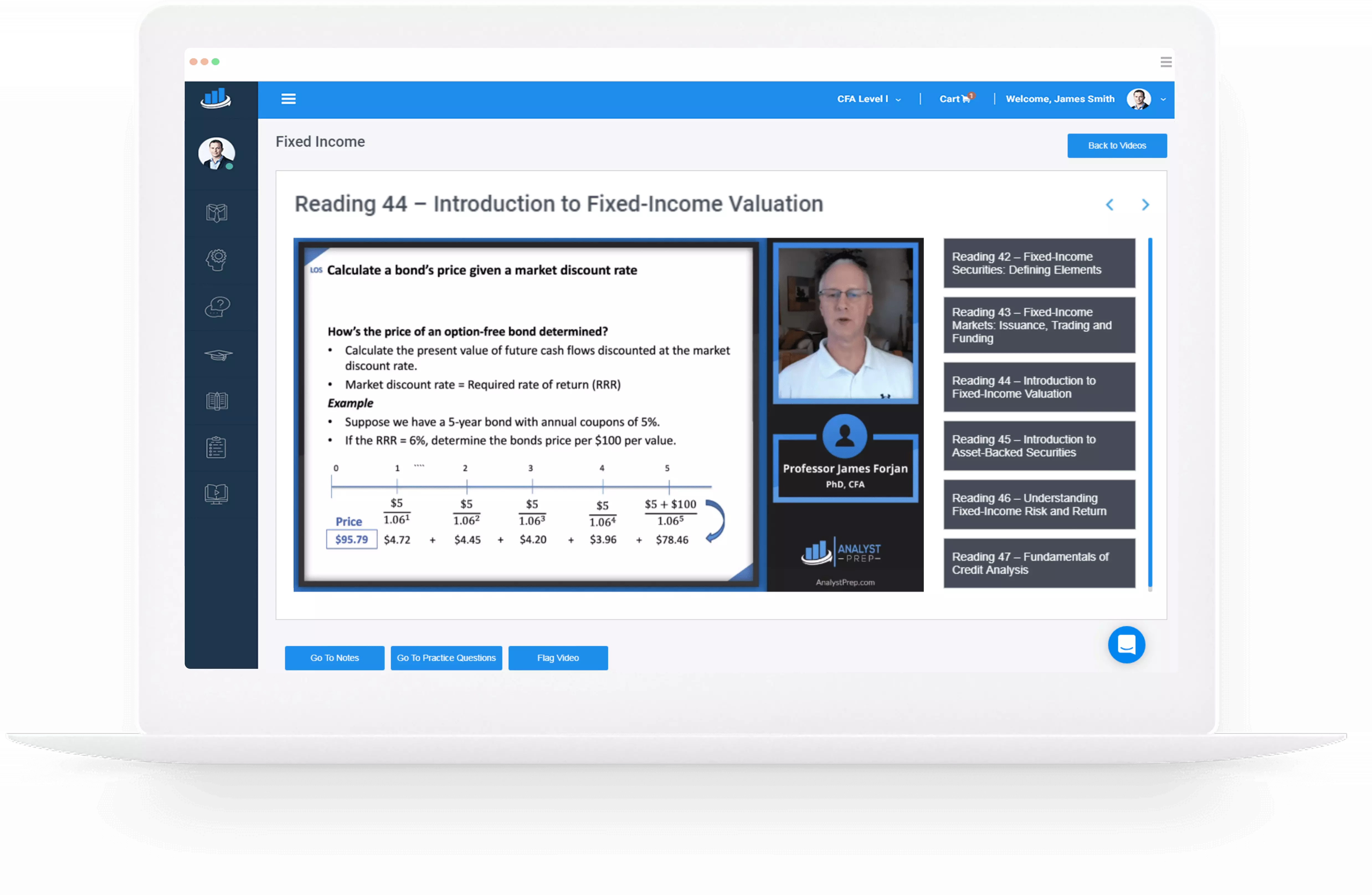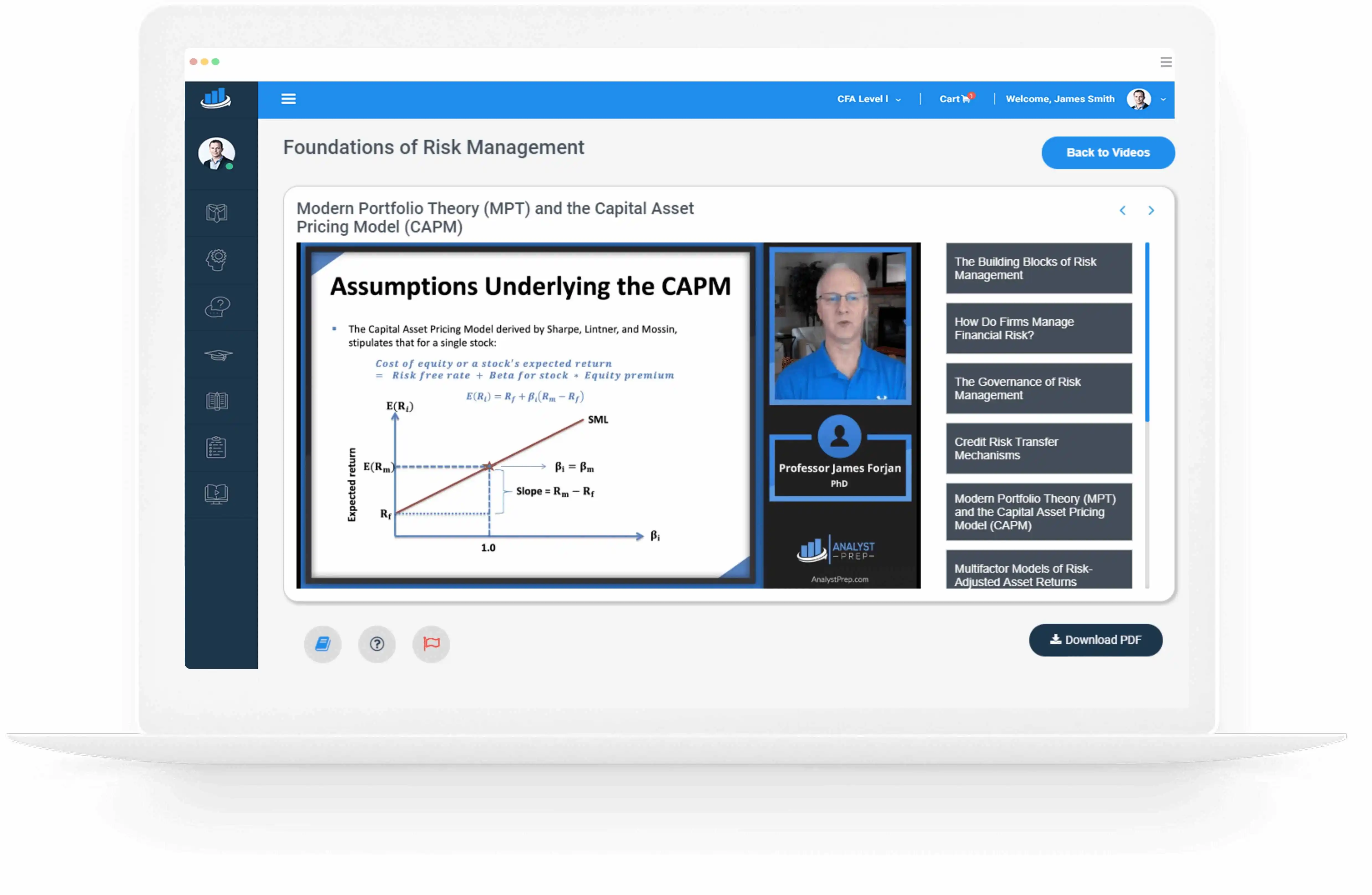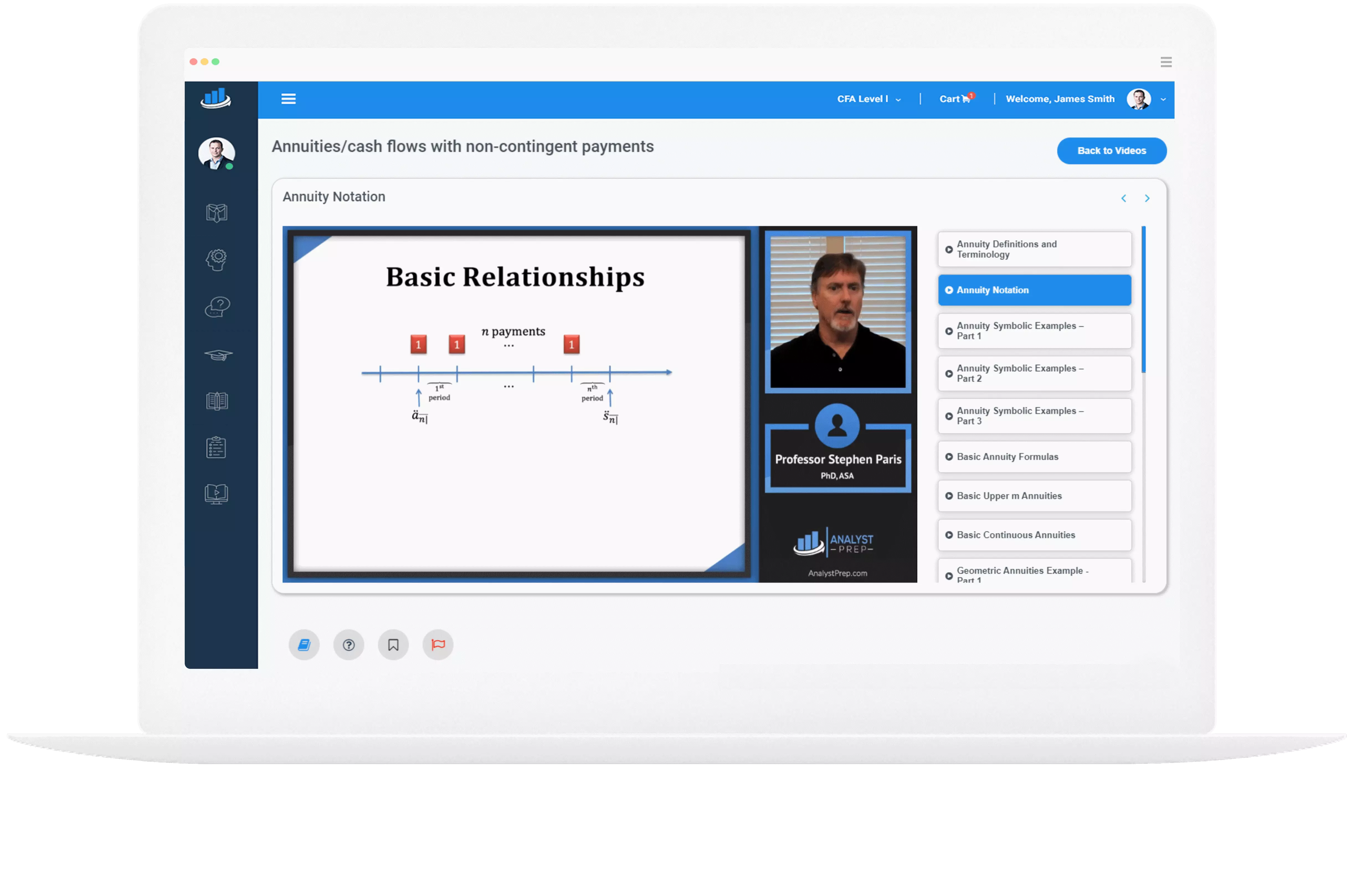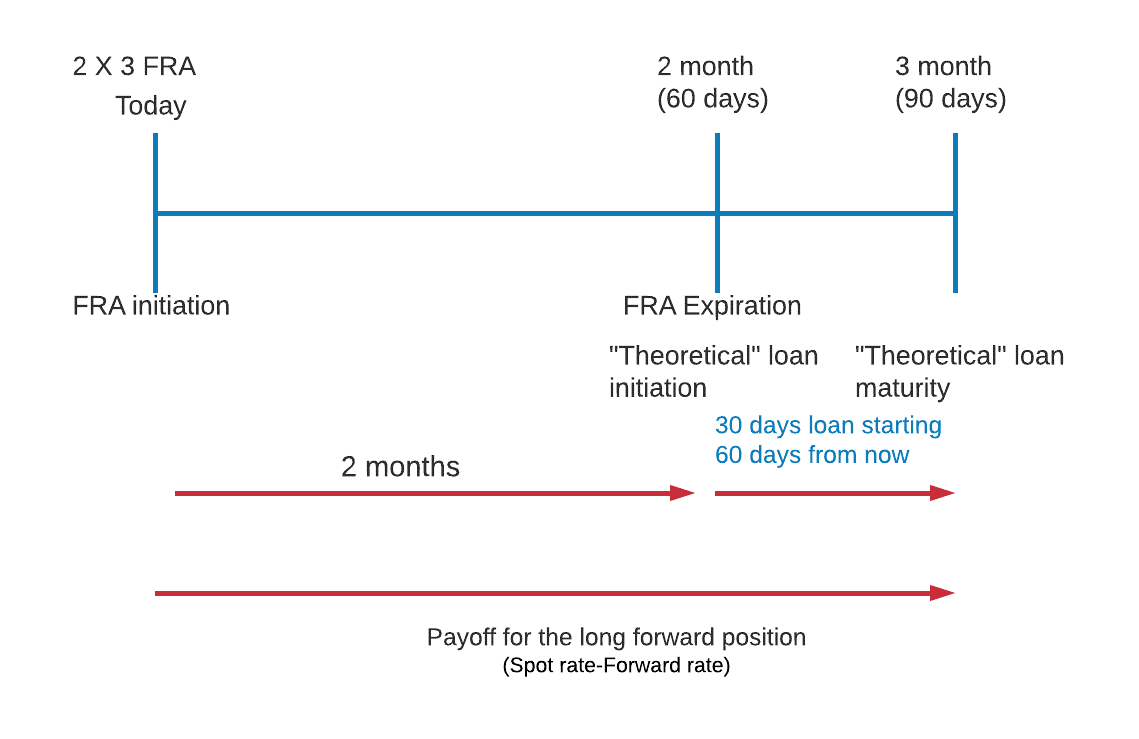- If the current LIBOR is greater than the FRA rate, the long can effectively borrow at a below-market rate. The long receives a payment based on the difference between the two rates.
- However, if the current LIBOR was lower than the FRA rate, then long makes a payment to the short. The payment ends up compensating for any change in interest rates since the contract date
Illustration
Example 2: FRA Valuation
Suppose we have a 1 x 4 FRA with a notional principal of $1 million. At contract expiration, the 90-day LIBOR at settlement is 6% and the contract rate is 5.5%.
Calculate the value of the FRA at maturity.
Solution
Since the settlement rate is higher (6%) than the contract rate (5.5%), the buyer will be receiving money from the seller. The payment to the long at settlement are as follow:
Discounted back 90 days @ 6%:
Added to clipboard × Shop CFA® Exam PrepOffered by AnalystPrep

Level I
Level II
Level III
All Three Levels




FRM Part I
FRM Part II
FRM Part I & Part II

Exam P (Probability)
Exam FM (Financial Mathematics)
Exams P & FM

GMAT Focus
Executive Assessment
GRE
FRM Exam Preparation
Beta and CAPM
Related Posts Oct 08, 2019Equity Investment – CFA® Level I Es .
Reading 36 – Market Organization and Structure Financial markets serve a wide variety. Read More
career cfa study-tips Aug 13, 2021What is the Difference between the CFA .
Whether you are considering a career in finance or are a professional, you. Read More
career cfa study-tips Jun 23, 2021What are the Differences between CFA® .
One of the most common questions that CFA candidates have is the differences. Read More
career cfa study-tips Sep 05, 2022Changes to CFA level III: Effective Fe .
Just like every other year, CFA once again made changes to its curriculum. Read More
AnalystPrep
Study Tools
Useful Links
Languages

AnalystPrep © 2014-2021
All Rights Reserved
1751 Richardson Street, Montreal, QC H3K 1G5
support@analystprep.com
Disclaimer: “GARP® does not endorse, promote, review, or warrant the accuracy of the products or services offered by AnalystPrep of FRM®-related information, nor does it endorse any pass rates claimed by the provider. Further, GARP® is not responsible for any fees or costs paid by the user to AnalystPrep, nor is GARP® responsible for any fees or costs of any person or entity providing any services to AnalystPrep. FRM®, GARP®, and Global Association of Risk Professionals™ are trademarks owned by the Global Association of Risk Professionals, Inc.
CFA Institute does not endorse, promote or warrant the accuracy or quality of AnalystPrep. CFA® and Chartered Financial Analyst® are registered trademarks owned by CFA Institute.
